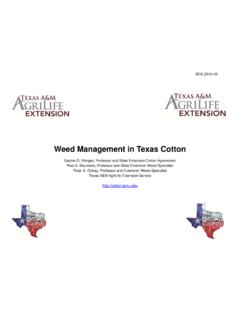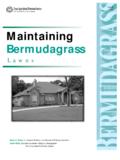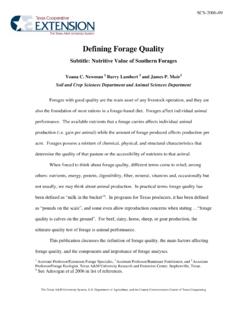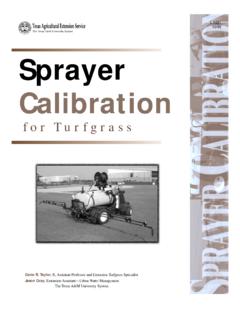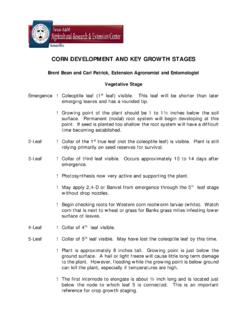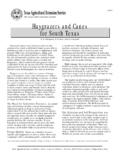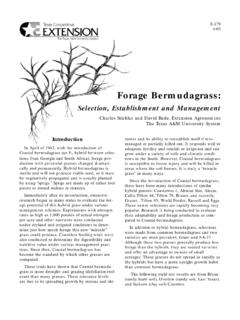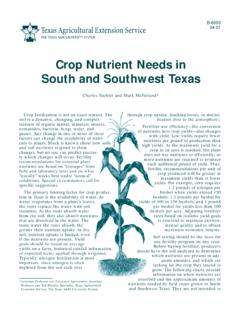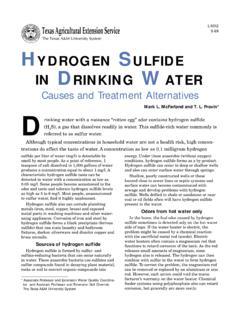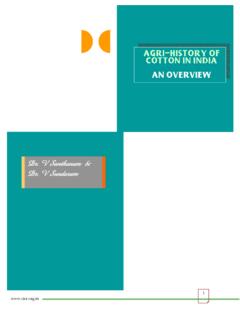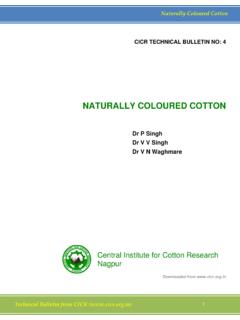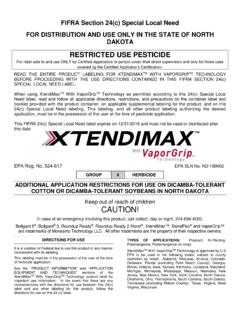Transcription of MAKING REPLANT DECISIONS - Texas A&M …
1 MAKING REPLANT DECISIONS . Dr. James Supak Program Leader and Associate Department Head Soil and Crop Sciences Department Originally Published in the Beltwide cotton Conference Proceedings, 1990. Reprinted and Updated by Dr. Randy Boman Extension Agronomist - cotton , Lubbock Reprinted May, 1999. Weather and disease problems frequently contribute to cotton stand losses. When adverse conditions result in poor emergence or uneven thinning, replanting may be necessary. DECISIONS regarding replanting should be based on objective evaluations of the remaining stand, stand uniformity, condition of the surviving plants and the costs associated with replanting.
2 Inadequate, skippy stands are usually the primary considerations in the REPLANT decision . Once the decision to REPLANT has been made, consideration must be given to fine tuning the production system to optimize productivity of late planted cotton . Introduction Stand establishment usually encounters more hazards than any other phase of cotton production. Cold weather, excessive moisture, hard packing rains, wind and sand abrasion, hail and environmentally induced disease outbreaks are among the hazards that impact germination, emergence and seedling survival. Stand reductions due to such catastrophes are usually beyond the control of cotton producers and force unwanted and difficult DECISIONS on whether or not to REPLANT damaged crops.
3 Unfortunately, there are no universal rules on which to base cotton replanting DECISIONS . The "right". decision depends on the circumstances pertaining to each situation and may vary from field to field or even among areas in a given field. In MAKING REPLANT DECISIONS , critical assessments should be made of the following factors: The plant stand remaining after damage, stand uniformity (skips), condition of the surviving plants, the calendar date and the costs associated with replanting. Remaining Stand cotton spacing studies have been conducted in the United States for more than a century. The optimum plant density for both optimum production and harvesting efficiency ranges from about 25 to 50,000 plants per acre or 2 to 4 plants per foot of drill in conventional row spacings.
4 Grower experiences and field tests have demonstrated that acceptable yields can be obtained from stands as low as 13 to 26,000 plants per acre (1 to 2 per foot) if the plants are uniformly spaced. The lower limits of acceptable population densities are influenced by a number of factors including the production region and the cultivars used. In the Southeast, Harvey (1989a) observed good yields from fields with average, uniform spacings of 24-inches between plants whereas on the Texas High Plains, Ray (1975) reported rapid declines in yields of irrigated cotton when plant populations dropped below plants per foot (20,000 plants per acre). In all likelihood, later maturing, more indeterminate varieties grown in the Southeast are better able to compensate for low plant densities than are the early maturing, relatively determinate varieties grown on the High Plains.
5 In MAKING REPLANT DECISIONS , the first rule is to not make the final judgement on the extent of damage to the crop too quickly. cotton has a tremendous capacity to recover from adversities. Consequently, it is usually best to delay the final stand evaluation until after the crop is exposed to 2 or 3 days of good growing conditions. In the meantime, it is important to protect the crop from further damage with timely tillage operations. Tilling crusted fields will minimize wind and sand damage, improve aeration, and hasten warming and drying of the soil that in turn will slow development of seedling disease populations. To determine after-damage plant populations, count and record the number of plants that are showing signs of recovery in a predetermined length of row ( 50 feet).
6 Periodically, dig up the plants in a 3 to 5 foot section of row and critically examine the root systems, stems and terminals to insure the plants are capable of recovery. Make several stand counts at random locations in the field. In addition to plant numbers, make note of the number and length of skips in the rows being counted. Also, indicate the locations within the field where the counts were made. In many instances, replanting may be necessary only in certain area of a field. As a general rule, if 2 or more reasonably healthy plants remain per foot in 38 to 40 inch rows and there aren't too many long skips, the stand is adequate for optimum lint production.
7 Stand Uniformity Plant spacing uniformity is a critical consideration in REPLANT DECISIONS . Poor spacing uniformity, or skips, may cause significant yield reductions even though the average number of plants per acre is adequate for optimum production. Heilman, et al. (1976) showed that skips which reduced plant populations 25 and 40%, respectively, in single-drilled cotton lowered yields and respectively, in the Rio Grande Valley of Texas . Supak and Wanjura (1988) found that skips which decreased stands by 26 and 45%, respectively, lowered yields by 13 and 26%, respectively, even though final plant densities were in excess of 2 plants per foot of row.
8 Yield reductions from skips depend on the frequency and length of skips. In California, Kerby et al. (1989) reported that a 6 foot skip with plants on either side would result in a 13% loss of yield potential for the portion of the field with such skips. Potential yield losses increased as the length of the skips increased. Studies in Arkansas indicate that stand losses of 20 to 30 percent can occur without yield decreases if the skips are bordered by rows with adequate stands (Bonner, 1989). Harvey (1989a) observed that skips on adjacent rows greater than 3 feet in length are likely to result in higher yield losses than longer skips within the row.
9 Yields tend to decline in proportion to the area without plants when skips exceeding 3-feet in length are on adjacent rows. McCarty (1989) noted the effects of skips on yield vary with their length, the planting pattern (skip row vs. solid), and soil type. Surviving plants on highly productive soils are better able to compensate for skips than those being grown in field with shallow, less fertile soils. Chambers (1986) established an index based on skip length (skips 12 to 18 inches were assigned a value of 1 and the index value increased by 1 for each additional 6 inch of skip length). Generally, no yield reductions were observed until the skip index reached 40 to 60.
10 Crop Condition The degree and rate of crop recovery will depend on the type and extent of damage sustained and the growing conditions following the injury. The types of crop damage can be broadly classified as acute and chronic. Damage resulting from hail events and wind and sand injury can be considered acute. Although such damage may be severe, it is usually of short duration and growing conditions are apt to return to normal in a relatively short period. Damage resulting from prolonged or recurring periods of cold, wet weather possibly combined with hail or wind-sand injury can be considered chronic because it occurs and intensifies over a long period of time.
